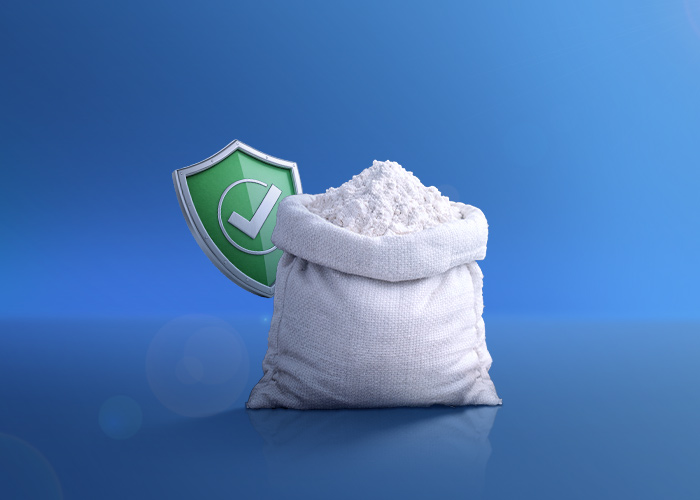Marjaan Khatam laboratory services for microbial tests
Microbial tests help to detect and identify pathogenic microbes as well as evaluate the health quality of food. These tests include microbial culture, colony counting, rapid tests for identification of pathogens and determination of water activity (aw) of food.
Accurate control of microbial characteristics helps prevent the spread of infectious diseases and maintain public health and food quality. Methods of testing the microbial characteristics of food include various techniques that are used to evaluate the safety and microbiological quality of food products.
A summary of the methods:
- Total count of microorganisms: This test is used to determine the total number of aerobic bacteria present in the sample
- Identification and counting of pathogens: methods such as porpolit and MPN are used to identify and count specific bacteria such as E.coli, salmonella and listeria
- Specialized tests: to identify specific microorganisms such as molds, yeasts, and parasites in food and water
- These methods help manufacturers to ensure that food products are microbiologically safe and reassure the consumers that the food they eat is hygienic.
- The list of items that can be checked in Marjean Khatam food laboratory
- Total count of microorganisms
- Search and identify Escherichia coli
- Search and identify Salmonella
- Identification and counting of coliform
- Counting mold and yeast
- Identification and counting of Enterobacteriaceae
- Search and identification of intestinal enterococci
- Identification and counting of Clostridium
- Identification and counting of lactic acid bacteria
- Identification and counting of acid-resistant bacteria
- Identification of mesophilic bacteria
- Identification of thermophilic bacteria
- Identification of anaerobic mesophilic bacteria
- Identification of anaerobic thermophilic bacteria
- Osmophilic yeasts
- Enumeration of sulfite-reducing Clostridium bacteria
- Search and identification of Listeria
- Determining the count of Bacillus cereus
In addition to conducting microbial tests in food, Marjaan Khatam laboratory is also capable of performing surface tests and finger tests.
Microbial characteristics in food
Examining the microbial characteristics in food is important in terms of ensuring the safety and health of food products. Microorganisms can have a variety of effects on food, including:
- Causing disease: Some microorganisms can be pathogenic and cause foodborne diseases.
- Food spoilage: Microorganisms can spoil and reduce the useful life of food.
- Favorable changes: some microorganisms play a role in the production of fermented products such as yogurt, cheese and bread.
The most common causes of food poisoning
Some of the most common food poisoning bacteria that are commonly found in food and cause foodborne illnesses include:
Salmonella
Salmonella is one of the most common causes of food poisoning in the world. According to the World Health Organization (WHO), this bacterium makes millions of people sick and kills more than thousands every year. About 85% of mortality from poisoning are due to consumption of contaminated food.
Salmonella bacteria enter the human body through the consumption of raw or semi-cooked foods such as red meat, chicken, eggs, fruits and vegetables, unpasteurized milk and dairy products, etc. or through food products that are contaminated during or after processing.
Also, contact with infected animals or lack of hygiene by people can lead to the transmission of this bacterium. Moreover, if the surfaces and containers are in contact with food contaminated with salmonella, they can cause this to be transferred to other food.
After entry of the bacterium into the body, salmonella survives in the cells of the immune system in the digestive system and starts multiplying. This bacterium can be transmitted through the blood to other organs such as the spleen, bone marrow, liver and gall bladder and infect them.
Clinical symptoms of salmonella can range from inflammation of the digestive tract to more severe cases and even death.
The important thing is that the infected person can transmit the bacteria to others even after recovery. Children, the elderly and people with a weak immune system are at the highest risk of contracting this disease.
Escherichia coli (E. coli)
Escherichia coli bacterium is one of the main causes of traveler's diarrhea and diarrhea in children, especially in developing countries.
According to a report by the World Health Organization (WHO) in 2010, about 111 million people were infected with this bacterium every year and about 63 thousand people died due to diarrhea caused by it.
This bacterium is transmitted to the human body through contaminated foods such as raw meat, unpasteurized milk, egg, raw fruits and vegetables, as well as food contaminated during or after processing.
Contaminated hands after contact with feces or animals are also one of the important ways of transmission of this bacterium.
In addition, if surfaces and kitchen utensils and containers come into contact with food contaminated with Escherichia coli, they can cause the transmission of this contamination to other food.
Most species of Escherichia coli are harmless and live in the digestive system of humans and animals. But some of its strains after entering the body, can by producing poison and causing infection, after about 3 to 4 days inflict damage to the lining cells of the intestinal mucosa and present symptoms such as severe abdominal pain, diarrhea (sometimes with blood), vomiting and mild fever.
Most people recover within 5 to 7 days, but in some cases, the bacteria can cause urinary tract infections, kidney failure, sepsis (blood infection), and even death.
Also, severe E. coli infection in pregnant women can lead to serious problems such as premature birth, stillbirth, and weight loss.
Listeria
Listeria monocytogenes is the cause of listeriosis. Consumption of contaminated food is considered the main way to transmit this bacterium to humans. According to the World Health Organization (WHO), listeriosis is one of the most serious diseases caused by the consumption of contaminated food. Although this disease is relatively rare and its incidence rate is between 0.1 and 10 cases per 1 million people per year, it has become a serious public health concern due to the high mortality rate associated with it.
This bacteria is transmitted to humans through the consumption of contaminated food such as unpasteurized dairy products, raw vegetables and fruits, processed meat products such as sausages and lunch meats, ready-to-eat foods that do not require cooking such as ready-made salads, etc. In addition, if the kitchen utensils surfaces and containers come into contact with food contaminated with listeria, they can cause transmission of contamination to other food.
Pregnant women, infants, the elderly, and people with weakened immune systems are more susceptible to Listeria infections.









comment